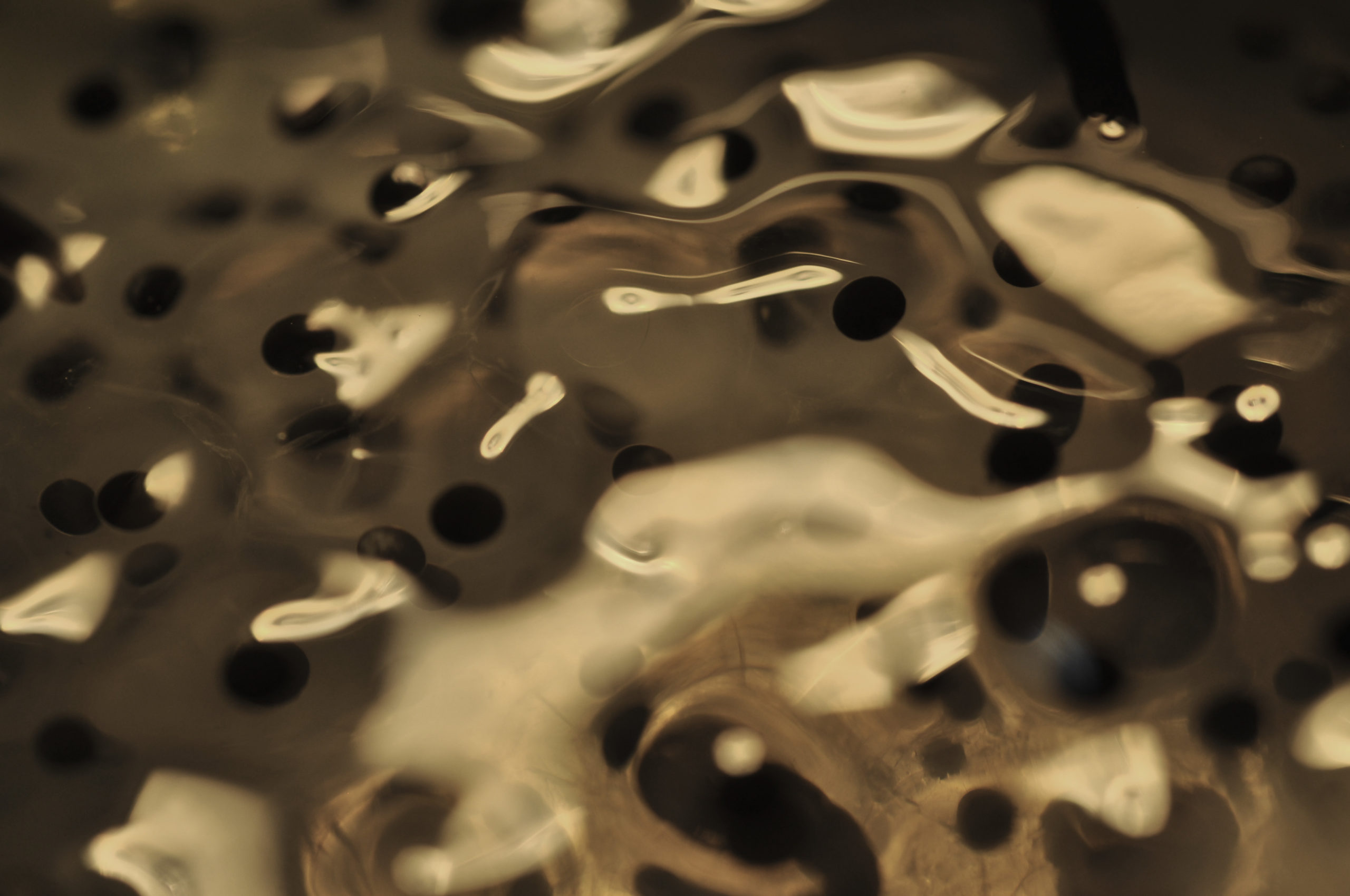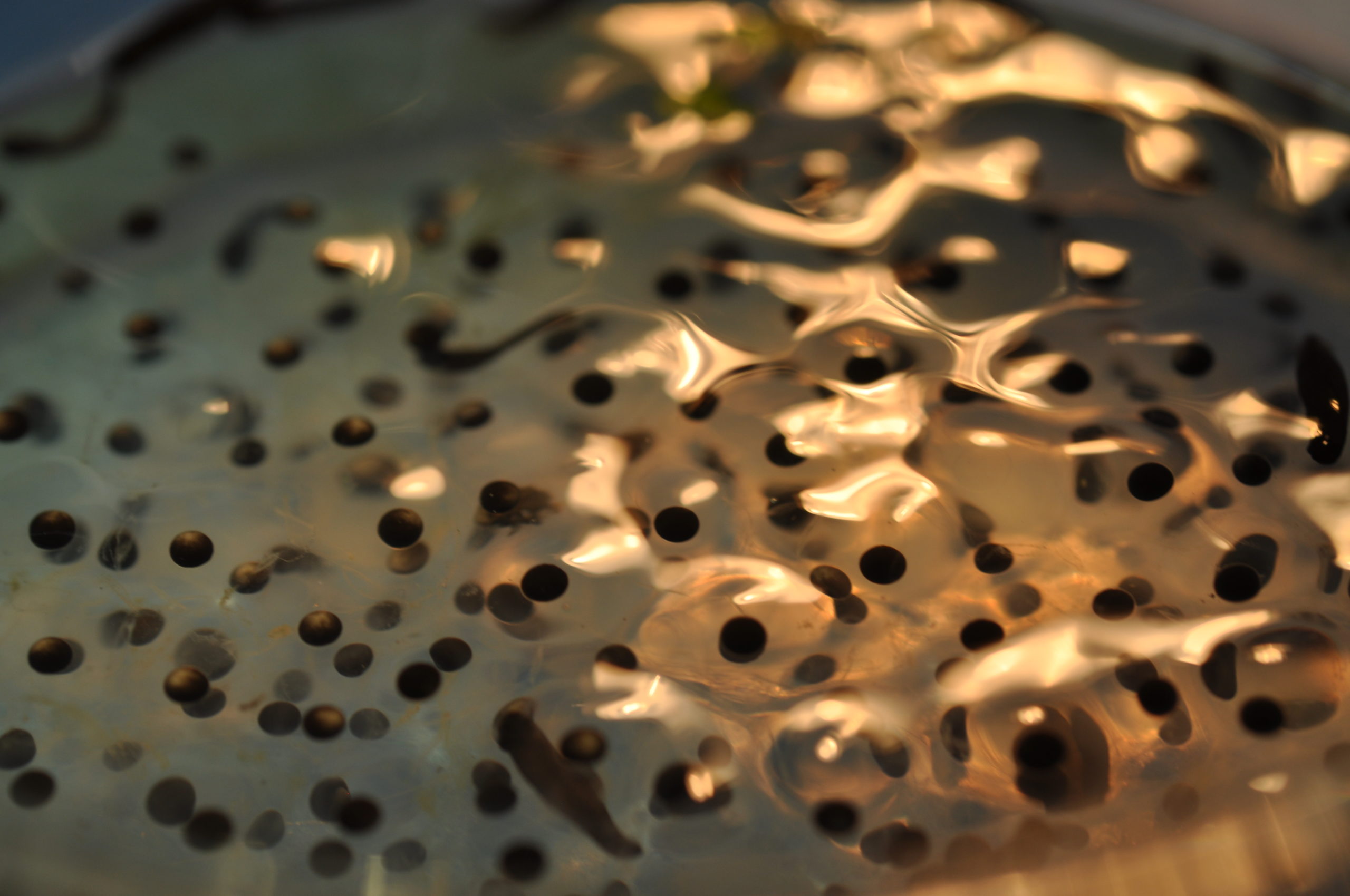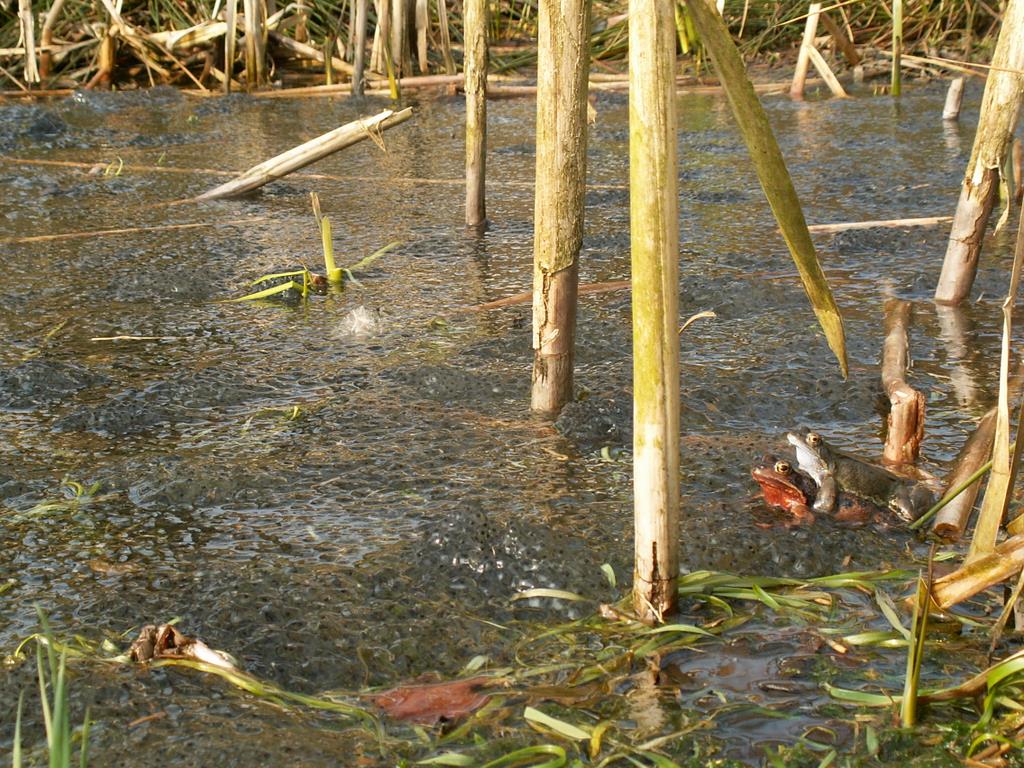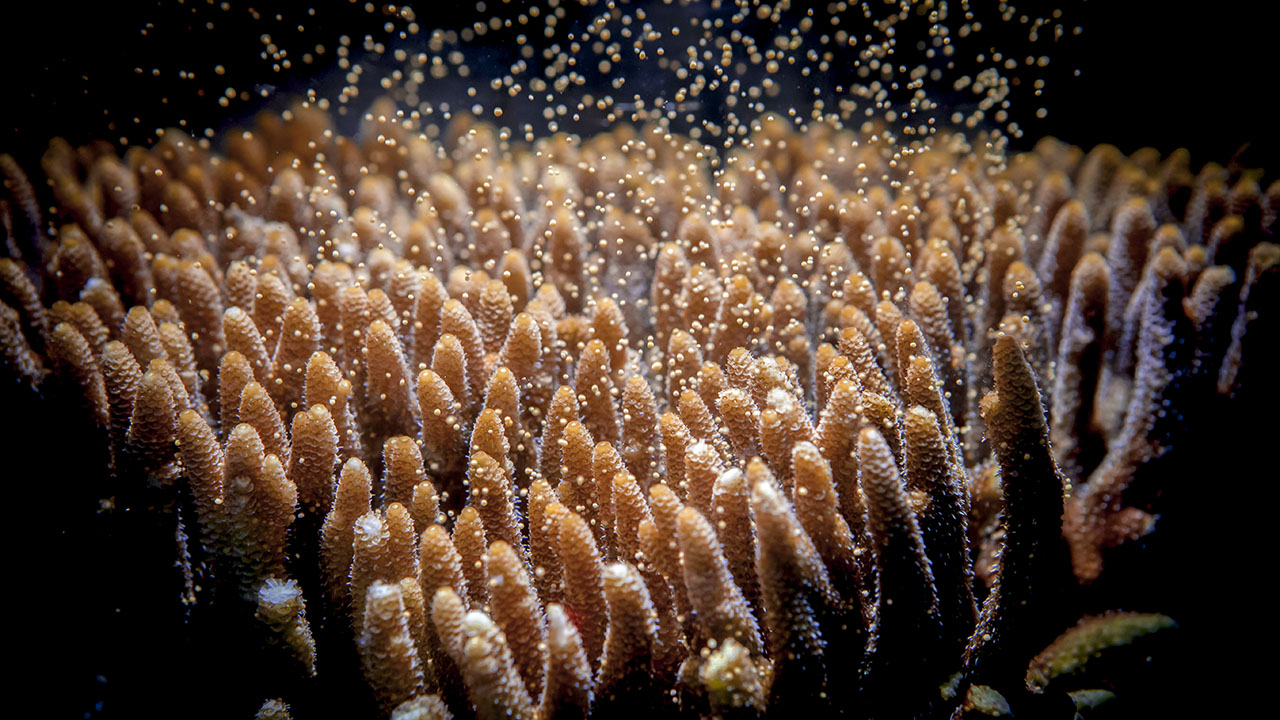
Here you’ll find photographs, videos and drawings of:
You can use these resources in reports, projects, tadpole diaries or anything you like! Please refer to the bottom of the page for information about attributing work.
Frog Spawn in the Lab
Frog spawn can be studied in the lab. This allows scientists to closely observe their development in a controlled environment like a laboratory.
Frog Spawn in the Wild
Frog spawn are typically found in ponds.
Not all frog spawn is found in ponds! Click below to watch a video of a glass frog defending its spawn from a predator.
Frog Spawn During Development
Scientists can observe frog spawn during their development to understand more about how tadpole develop in the egg.
Take a look at these pictures by Alan Roberts below. Inside the eggs, you can see how the tadpoles in the first picture start to develop into tadpoles before they hatch.


In these photos taken by Lia Gilmour, you can see the tadpole beginning to grow a tail!


Other Types of Spawn?
Frogs aren’t the only animals that lay spawn. Many other aquatic animals do as well!
Toads and newts are examples of other amphibians that also lay spawn. Toad spawn especially look similar to frog spawn, however there are a few key differences if you know what to look for.

We also have a colouring activity! Click here to download a full size image to print.
Remember to attribute photographs, videos or work where appropriate! This is not needed unless used online, but if you’re unsure please refer to the creative commons licence rules.














